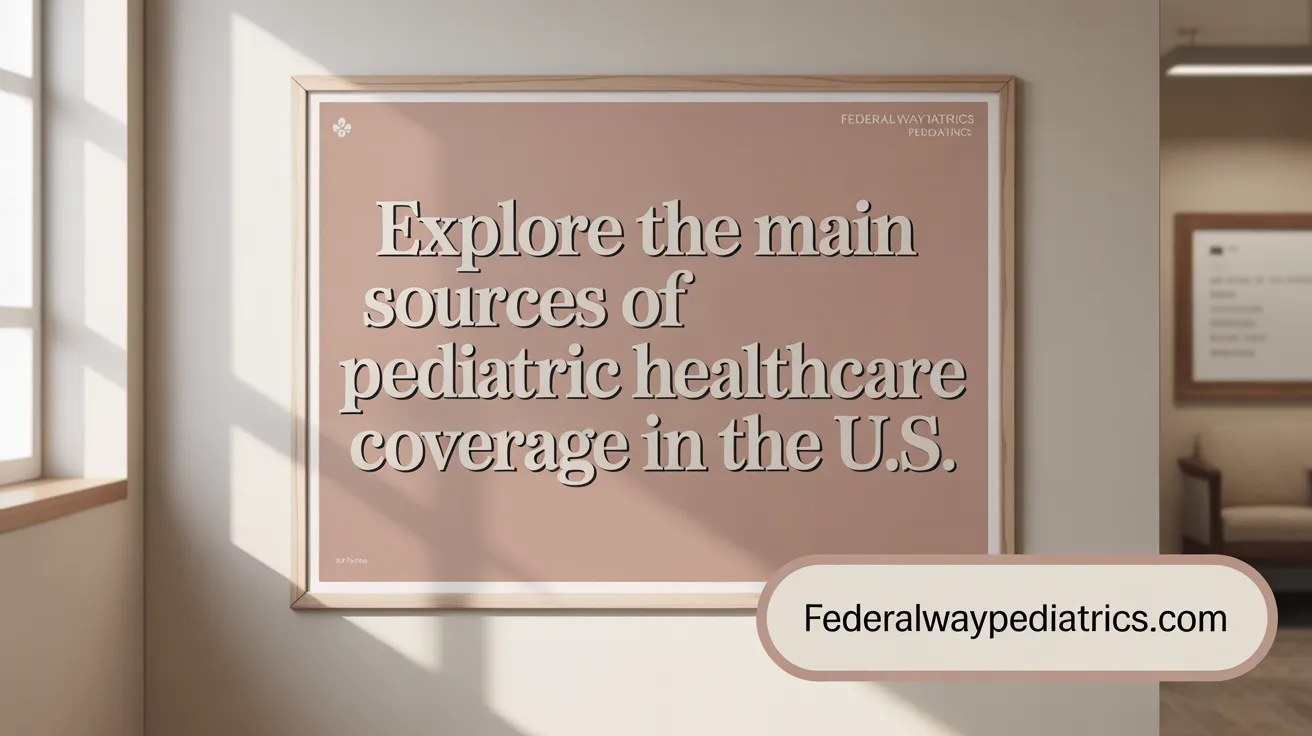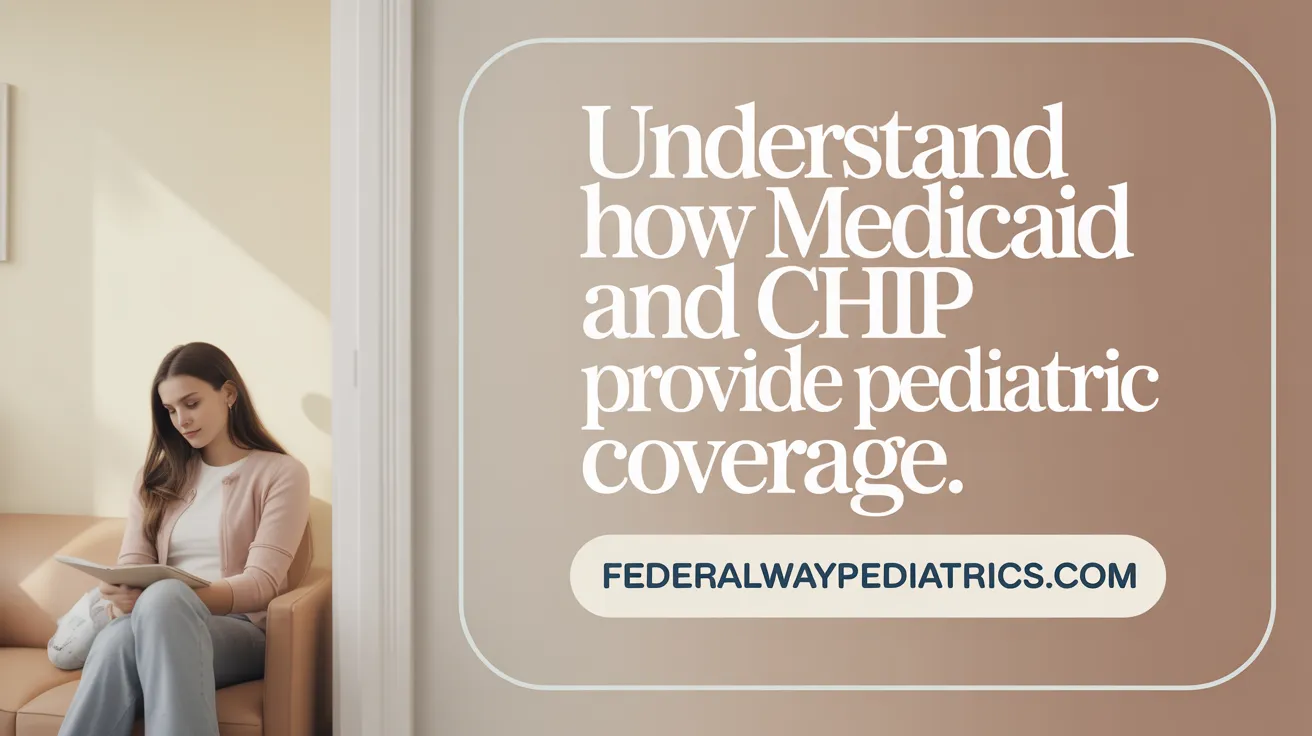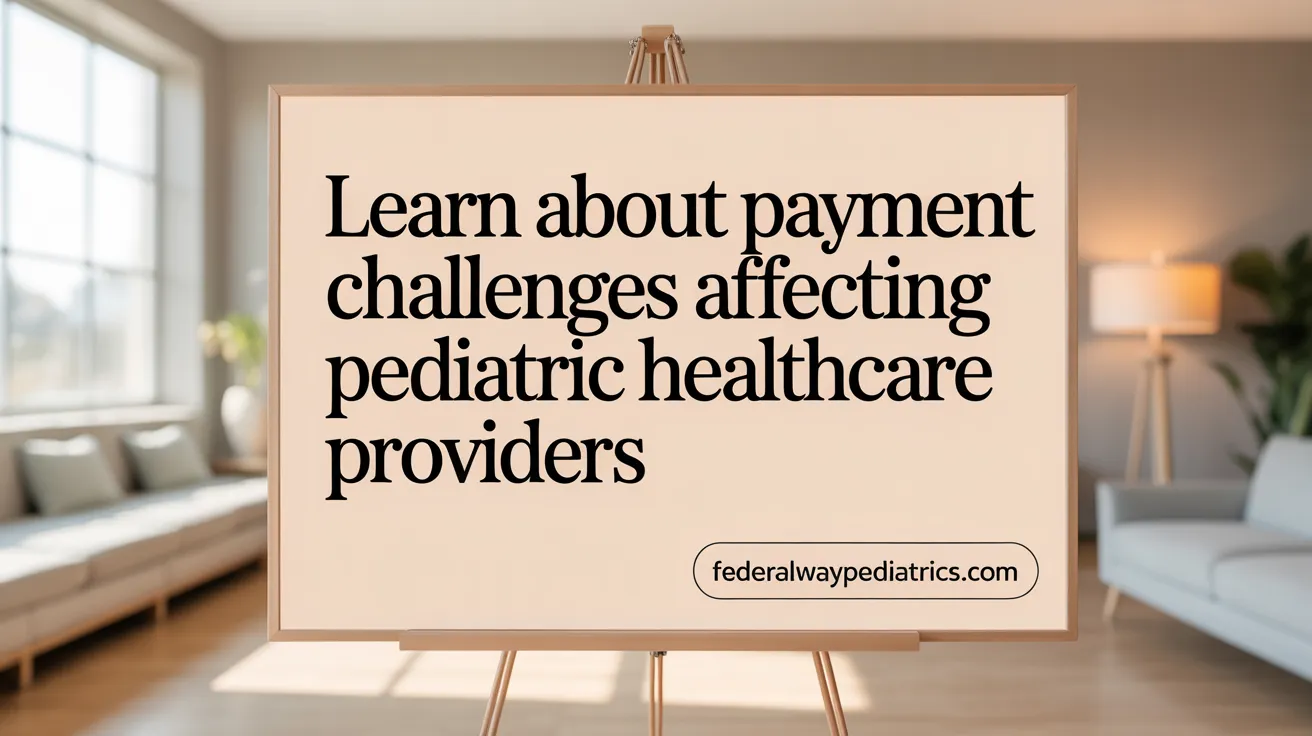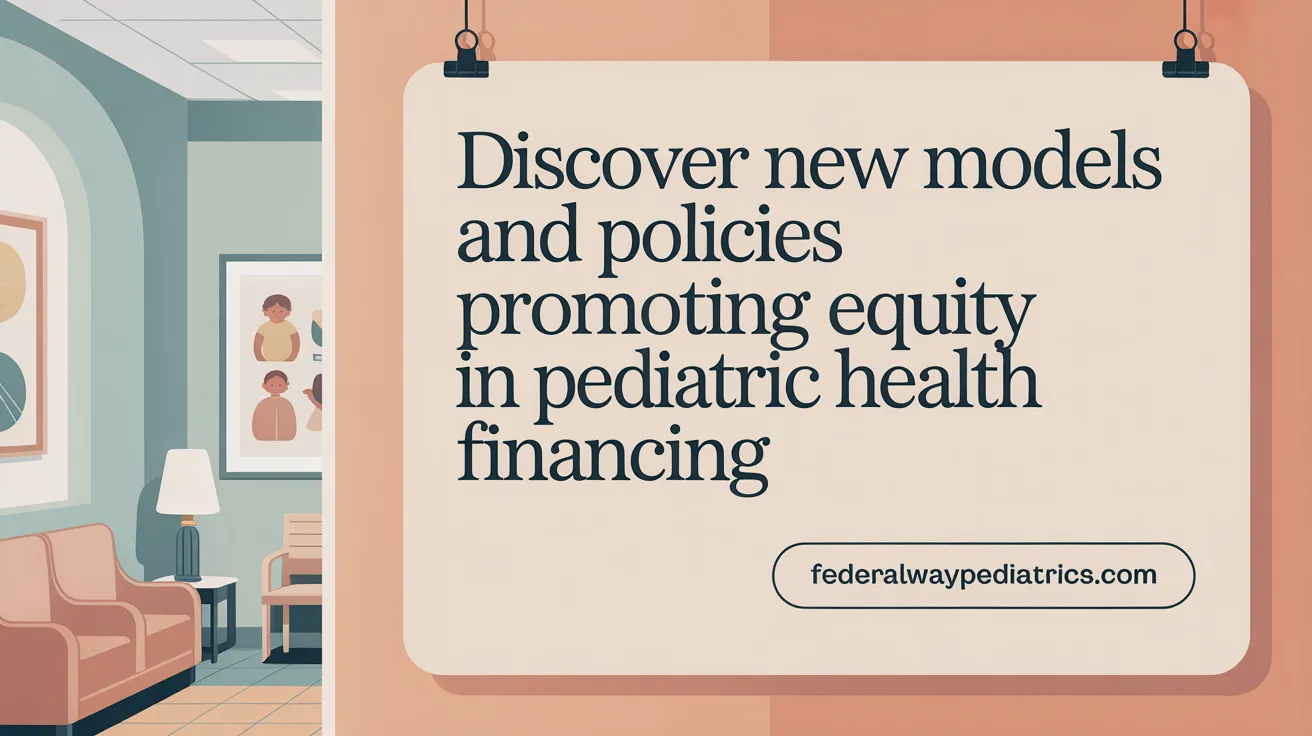Understanding Pediatric Healthcare Financing
Pediatric healthcare financing presents a unique set of challenges and opportunities distinct from adult care. Despite children comprising nearly a quarter of the U.S. population, they account for less than 10% of healthcare spending. This discrepancy reflects differences in care needs, coverage types, and payment models specific to pediatrics. Families, healthcare providers, and policymakers must understand the diverse insurance and payment options available to ensure children receive comprehensive and affordable care. This article explores key elements of insurance coverage, payment practices, and emerging models designed to improve pediatric healthcare financing and access.
Diverse Insurance Sources Supporting Pediatric Healthcare

What are the primary sources of pediatric healthcare coverage in the U.S.?
Medicaid and the Children’s Health Insurance Program (CHIP) are the largest public sources of health coverage for children in the United States. Together, they cover about 36% of children, primarily targeting families with lower to moderate incomes. Private insurance, often provided through employer-sponsored plans, remains the primary coverage source for roughly 52% of children (Kids' health coverage in the United States).
Medicaid and CHIP coverage and eligibility
Nearly all states offer CHIP, which is designed for children in families whose income is too high for Medicaid but not enough to afford private insurance. CHIP coverage includes routine pediatric services such as well-child visits, immunizations, dental and vision care, prescriptions, emergency and hospital services, and behavioral health care. Eligibility criteria and benefits vary by state, but coverage is comprehensive and typically includes free routine well-child visits and dental care with limited cost-sharing, capped at 5% of family income annually (Children’s Health Insurance Program).
Private insurance roles
Private insurance covers the majority of pediatric healthcare visits, usually via employer-based plans. These plans may offer broader service networks but often come with higher out-of-pocket expenses. Private coverage also varies widely in benefits and cost, with families sometimes facing significant co-payments or deductibles. Nevertheless, private insurance plays an essential role in providing healthcare access to over half of U.S. children (Children's healthcare costs in the U.S. and Children's Health Insurance Plans).
State and federal funding mechanisms
Medicaid and CHIP are funded jointly by state and federal governments. The federal government matches state expenditures through the Federal Medical Assistance Percentage (FMAP), which ranges from 50% to 77% depending on the state's income level. This financing structure supports broad coverage, especially for more vulnerable children (Financing Children's Health Care).
Coverage variations by demographics
Coverage patterns reflect socioeconomic and racial/ethnic disparities. More than half of Black, Hispanic, American Indian/Alaska Native, and Native Hawaiian children rely on Medicaid or CHIP for healthcare. Geographic variation is also notable due to differences in state eligibility rules, benefit packages, and funding contributions, affecting access and coverage quality (Children's insurance coverage statistics 2021.
This array of insurance sources and state-specific programs creates a multifaceted safety net, ensuring that millions of children gain essential health services while also highlighting ongoing challenges of coverage uniformity and affordability across populations.
Navigating Public Insurance Programs: Medicaid and CHIP

How do Medicaid and CHIP work to provide pediatric coverage?
Medicaid provides free or low-cost healthcare coverage to children under 19 years old, offering a broad range of services including preventive care, emergency visits, dental and vision care, prescriptions, and mental health treatment. CHIP complements Medicaid by serving children and pregnant women in families with incomes too high for Medicaid eligibility but insufficient to afford private coverage. Families can apply for CHIP at any time, and eligible children receive immediate coverage.
Eligibility and application processes
Eligibility standards for Medicaid and CHIP vary by state but are designed to cover low-to-moderate income families. CHIP application is flexible with options to apply online through Healthcare.gov or by phone. States administer their own CHIP programs with specific eligibility criteria and rules. Importantly, children can qualify for both Medicaid and CHIP and enrollment can occur year-round.
Benefits and coverage scope
Both Medicaid and CHIP offer comprehensive pediatric care benefits, including routine check-ups, immunizations, doctor visits, prescriptions, dental and vision care, emergency and hospital services, laboratory tests, and behavioral health services. Routine well-child and dental visits often come at no cost under CHIP, though some states implement small copayments or premiums that are capped at 5% of family income annually (Children's Health Insurance Program (CHIP).
Cost-sharing policies
Cost-sharing is minimal and designed to be affordable. CHIP programs generally impose copayments or premiums but limit total family costs to no more than 5% of income per year. Medicaid usually offers free coverage for eligible children with limited or no out-of-pocket costs (Financing Children's Health Care.
Managed care involvement
Most children enrolled in Medicaid and CHIP are covered under managed care plans, which may be private for-profit, private nonprofit, or publicly operated. These managed care plans cover comprehensive benefits tailored specifically for pediatric populations, integrating preventive and specialty services within coordinated care frameworks to enhance health outcomes (Children with special healthcare needs.
Understanding Billing, Insurance Claims, and Family Financial Responsibilities

How Are Insurance Claims Handled and Is Preauthorization Needed?
Pediatric healthcare providers typically submit insurance claims immediately after care. Preauthorization or referrals may be required before certain procedures to ensure coverage. Families should verify their insurance details, especially provider network participation, to avoid rejected claims or out-of-network charges. For details on Children’s Healthcare of Atlanta insurance claims and preauthorization or Pediatric Health Care Associates billing procedures and insurance verification, refer to the respective provider resources.
What Payment Options Are Available and How Transparent Are Billing Processes?
Parents can pay bills through various methods, including secure online portals, phone payments, mail, or in-office payment. Many pediatric practices provide pricing estimators and publish standard charges to help families anticipate costs. Billing transparency is reinforced by rules like the No Surprises Act, which mandates providers to offer upfront cost estimates, minimizing unexpected expenses. See PHCA payment methods and No Surprise Act guidance and Instamed Online Bill Pay for pediatric providers for examples of payment options and billing transparency tools.
What Are Typical Out-of-Pocket Costs and Cost-Sharing Expectations?
Families are often responsible for copayments, deductibles, and coinsurance, usually collected at service time. Some may face significant annual out-of-pocket expenses, with over 13% paying $1,000 or more yearly. Costs vary depending on insurance type—private insurance may have higher deductibles compared to Medicaid or CHIP, which usually offer low or no copayments for well-child visits. Detailed information on out-of-pocket expenses and cost-sharing under Medicaid and CHIP and children’s healthcare spending patterns provide deeper insight on cost expectations.
Are Assistance Programs and Financial Counseling Available?
Many pediatric providers offer financial assistance or sliding scale fees for families unable to pay their medical bills, often based on income thresholds up to 600% of the federal poverty level. Dedicated offices or counselors help families determine Medicaid eligibility and navigate insurance complexities. Payment plans may be arranged for those with outstanding balances to ease financial burdens. For information about financial assistance and Medicaid eligibility assistance at Children’s Healthcare of Atlanta or sliding fee discount programs and payment plans at pediatric practices, consult these provider resources.
What Should Families Know About Billing and Payments in Pediatric Healthcare?
Claims are promptly sent to insurers, but families must confirm their insurance coverage and understand benefits, copayments, and network rules. Payments for copays and deductibles are typically due at the appointment time. Providers comply with billing regulations to protect families from surprise charges, and patients are encouraged to review all correspondence related to billing carefully. In the event of claim rejection, providers assist with resubmission, but families may also need to coordinate with insurers directly. Useful guidance is available at PHCA billing FAQs and insurance verification and Pediatric Health Care Associates billing and payments.
Understanding these facets helps families manage pediatric healthcare expenses effectively and access available support to ensure children get necessary care without undue financial stress. Additional comprehensive information on Financing Children's Health Care and Pediatric Payment Models and Children’s Health Insurance Program (CHIP) can guide families in navigating insurance coverage and financial planning for pediatric care.
Challenges in Pediatric Payment Models and Provider Reimbursement

How do payment models and reimbursement rates affect pediatric healthcare providers?
Medicaid reimbursement rates for pediatric services are typically lower than both Medicare and private insurance rates. This discrepancy significantly impacts pediatric subspecialists by reducing their overall compensation, which can discourage physicians from pursuing or continuing careers in pediatric specialties (Financing Children's Health Care.
A crucial factor in this landscape is the use of Relative Value Units (RVUs) to determine physician payment. RVUs often undervalue pediatric subspecialty care compared to adult services due to system biases favoring procedure-based and adult-oriented evaluations. This undervaluation contributes to comparatively lower salaries for pediatric subspecialists, affecting workforce supply and limiting patient access to specialized pediatric care (CMS valuation of pediatric services in RVUs.
The financial challenges arising from lower Medicaid payments not only affect provider income but also influence the clinical capacity and availability of specialized care for children, particularly those with complex health needs (Impact of low Medicaid reimbursement on pediatric subspecialties.
To address these issues, policy recommendations advocate for increasing federal Medicaid payment rates for pediatric services to match Medicare rates within five years. Moreover, revising RVU valuations to accurately represent the complexity and importance of pediatric services is essential. These changes would foster improved provider participation and enhance access to quality pediatric healthcare (Policy recommendations for Medicaid payment rates.
| Aspect | Impact | Description |
|---|---|---|
| Medicaid Reimbursement Rates | Lower than Medicare and private insurance | Leads to decreased pediatric specialist compensation (Medicaid vs Medicare reimbursement rates |
| RVU System | Undervalues pediatric care | Biased towards adult and procedure-based services, affecting pay (CMS valuation of pediatric services in RVUs |
| Workforce | Reduced supply of pediatric subspecialists | Financial incentives do not favor pediatric specialty careers (Impact of low Medicaid reimbursement on pediatric subspecialties |
| Policy Recommendations | Increase Medicaid payments; revise RVUs | Aim for parity with Medicare, ensuring fair valuation of pediatric care (Policy recommendations for Medicaid payment rates |
Innovative Approaches and Equity in Pediatric Healthcare Financing

What are emerging models and policies to improve pediatric healthcare financing and equity?
Emerging paediatric alternative payment models focus on the unique developmental stages of children by promoting care that is tailored to their social and medical needs. These models prioritize primary care and incorporate collaboration across sectors such as education and social services to address the holistic well-being of children. Instead of emphasizing short-term cost savings, they evaluate success by long-term health outcomes, social development, and family impact.
Family-centered care is central to these models, ensuring that payment systems support coordinated therapies and services both inside and outside traditional healthcare settings. Cross-sector data integration allows providers to connect families with community resources effectively.
To promote equity, policies support universal, continuous, and affordable insurance coverage for all children and young adults up to age 26, regardless of income or immigration status. Medicaid and CHIP remain critical, with calls to enhance funding and achieve payment parity to improve provider participation and access to care for children with special healthcare needs. Mental health and telehealth services are included with equal payment incentives, reducing barriers to essential care.
These innovations collectively aim to close disparities by ensuring comprehensive coverage that covers preventive, acute, behavioral, and complex care, supporting the lifelong health trajectory of every child.
Toward Equitable and Sustainable Pediatric Healthcare Coverage
Ensuring all children have access to comprehensive, affordable healthcare requires navigating a complex and evolving landscape of insurance programs, billing practices, and payment models. Public programs like Medicaid and CHIP play a vital role in safeguarding coverage for millions, complemented by private insurance options. However, challenges remain in reimbursement adequacy, provider participation, and coverage continuity, particularly for children with special needs and underserved populations. Emerging payment models and targeted policy reforms offer promising directions toward more equitable, efficient, and family-centered pediatric care financing. Informed families, responsive providers, and supportive policies collectively advance the goal of optimal health outcomes for every child.
